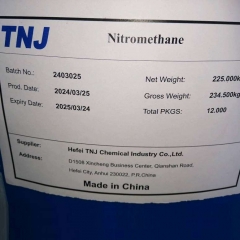Physical characters of Ammonium formate
Ammonium formate CAS 540-69-2 exists in white hygroscopic crystals. It is the ammonium salt of formic acid.
Appearance White monoclinic crystals, deliquescentOdor Slightly ammoniac
Density 1.26 g/cm3
Melting point 116 °C (241 °F; 389 K)
Boiling point 180 °C (356 °F; 453 K)
Solubility in water (grams per 100g of water) 102g(0 °C); 142.7 g (20 °C); 202.4 g (40 °C);
Solubility in other Soluble in liquid ammonia, alcohol, diethyl ether
Specification of Ammonium formate
Appearance White solid
Assay, % ≥99.0Residue on Ignition, % ≤0.04
SO4, % ≤0.01
Chloride, % ≤0.004
Fe, % ≤0.001
Pb, % ≤0.0004
Where to use Ammonium formate
1) Pure ammonium formate decomposes into formamide and water when heated, and this is its primary use in industry. Formic acid can also be obtained by reacting ammonium formate with a dilute acid, and since ammonium formate is also produced from formic acid, it can serve as a way of storing formic acid.
2) Ammonium formate can also be used in palladium on carbon (Pd/C) reduction of functional groups. In the presence of Pd/C, ammonium formate decomposes to hydrogen, carbon dioxide, and ammonia. This hydrogen gas is adsorbed onto the surface of the palladium metal, where it can react with various functional groups. For example, alkenes can be reduced to alkanes, or formaldehyde to methanol. Activated single bonds to heteroatoms can also be replaced by hydrogens (hydrogenolysis).3) Ammonium formate can be used for reductive amination of aldehydes and ketones
4) Ammonium formate can be used as a buffer in high performance liquid chromatography (HPLC), and is suitable for use with liquid chromatography-mass spectrometry (LC/MS). The pKa values of formic acid and the ammonium ion are 3.8 and 9.2, respectively.
Ammonium formate Packaging
25kg per bag
20.0mt per 20ft container without pallet
18.0mt per 20ft container with pallets
Storage & Handling of Ammonium formate
Keep in a tightly closed container.
Store in a cool, dry, corrosion-proof, ventilated area away from moisture, sources of heat or ignition, combustibles and oxidizers. Protect against physical damage.












 chemical.tnj
chemical.tnj +8618949823763
+8618949823763 tnjchem
tnjchem 2881500864
2881500864